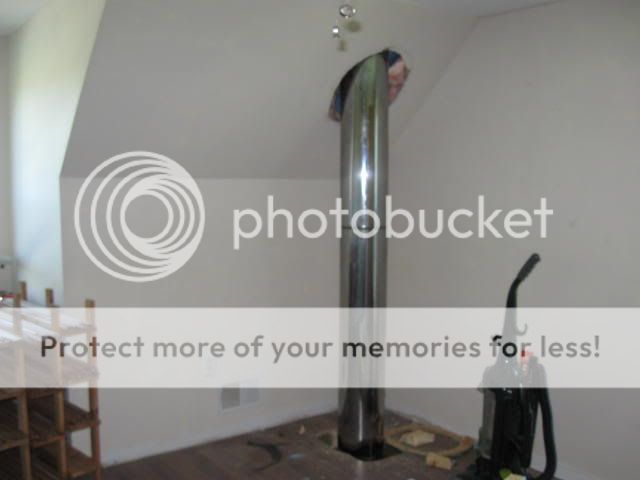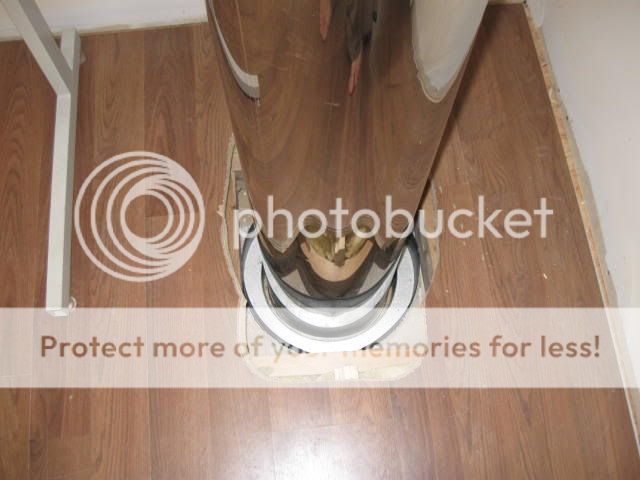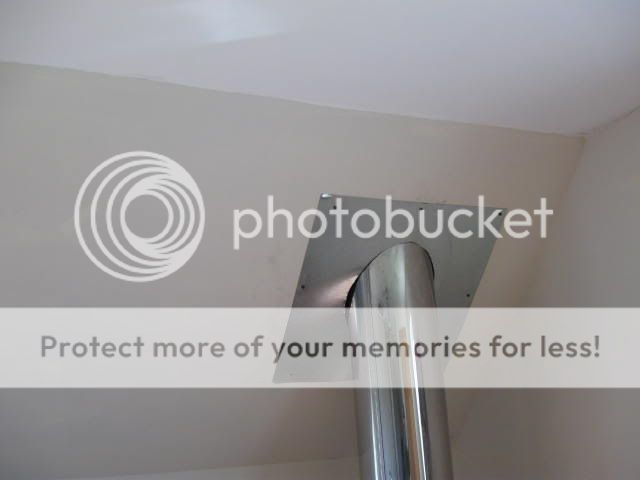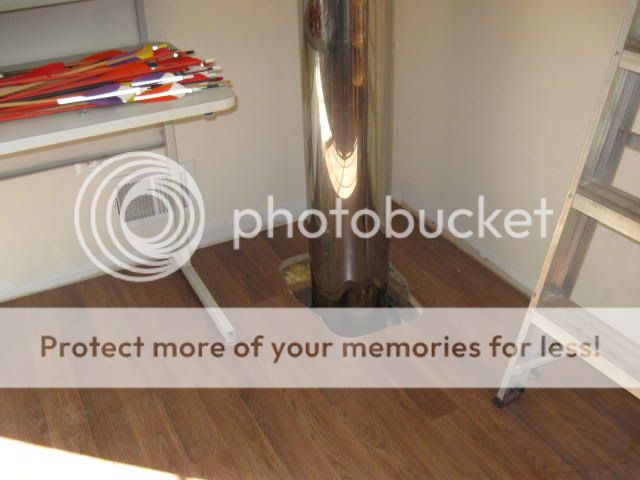I am really pleased so far with my stove install. I was given this VC parlor stove(Knock off) and had the chimney professionally installed. The chimney is about 16' with the stove pipe being double wall and the chimney being triple wall. It goes straight up through the house and seems to draw very well. I have been burning steady for a few days and love the warmth and NOT tuning on the heat. It has not been very cold yet here in Michigan with daytime temps in the 60's and nighttime in the 40's.
As you can see I have a thermometer in top of the stove. I was told here to keep it at or above 500 degrees and that seems very hot? I can easily get it that hot but I would be blown out of the house with those temp(for now) and get a little anxious about a house fire at that heat if I kept it steady. It burns nice and slow and I can get 6-8 hours of burn with a couple logs if I close it up and it runs in the 300 range. I have not had to start a fire since I started it a week ago because there is always enough hot coals left in the morning to get a new log going if I open the damper and air flap for a few moments. I let every new fire get going real good and the stove top above 400-450 before I shut it back down to a comfortable 300 range.
I have been around fire/woodstoves all my life in my home growing up and the cabin we have. My question(s) is/are:
- am I running it hot enough to keep the chimney safe?
- I find creasote building on the LH door that I fill the stove from but cannot see much in the chimney cap when looking from the ground with binoc's
- I will say my biggest concern is burning my house down and without having a lot of time burning with this stove I am not sure what temp I can safely run it at without worry. OR - what temps I should be runing it at to keep the chimney safe.
After a month or so of steady use I plan to look up the chimney to get real information of what is going on in there but just want some input on my set up and any concerns any of you all may have about my practices. As I get more comfortable with the stove, it's burn rate, and just having fires going as well as waiting for cooler weather, I will be loading it more and running it a bit hotter. For now I am trying to get a feel for it so that when I really need it I am prepared. I am just a little anxious leaving the house or going to bed with a big load of wood in there and it running real hot.
I do have 3 candles siting on the hearth behind the stove to test for how hot it is getting and they have not melted at all, yet.
I guess I am just looking for informed feedback from you all. Thanks for all the help so far - this site has been a great resource.
Bob Urban
getting up to temps in the AM



As you can see I have a thermometer in top of the stove. I was told here to keep it at or above 500 degrees and that seems very hot? I can easily get it that hot but I would be blown out of the house with those temp(for now) and get a little anxious about a house fire at that heat if I kept it steady. It burns nice and slow and I can get 6-8 hours of burn with a couple logs if I close it up and it runs in the 300 range. I have not had to start a fire since I started it a week ago because there is always enough hot coals left in the morning to get a new log going if I open the damper and air flap for a few moments. I let every new fire get going real good and the stove top above 400-450 before I shut it back down to a comfortable 300 range.
I have been around fire/woodstoves all my life in my home growing up and the cabin we have. My question(s) is/are:
- am I running it hot enough to keep the chimney safe?
- I find creasote building on the LH door that I fill the stove from but cannot see much in the chimney cap when looking from the ground with binoc's
- I will say my biggest concern is burning my house down and without having a lot of time burning with this stove I am not sure what temp I can safely run it at without worry. OR - what temps I should be runing it at to keep the chimney safe.
After a month or so of steady use I plan to look up the chimney to get real information of what is going on in there but just want some input on my set up and any concerns any of you all may have about my practices. As I get more comfortable with the stove, it's burn rate, and just having fires going as well as waiting for cooler weather, I will be loading it more and running it a bit hotter. For now I am trying to get a feel for it so that when I really need it I am prepared. I am just a little anxious leaving the house or going to bed with a big load of wood in there and it running real hot.
I do have 3 candles siting on the hearth behind the stove to test for how hot it is getting and they have not melted at all, yet.
I guess I am just looking for informed feedback from you all. Thanks for all the help so far - this site has been a great resource.
Bob Urban
getting up to temps in the AM







